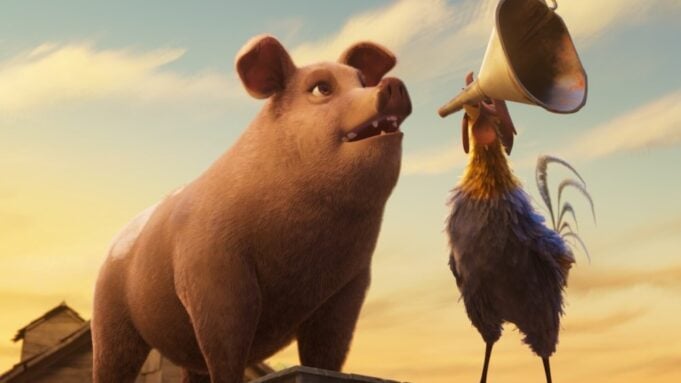When George Orwell published “Animal Farm” 80 years ago, he intended the book — in which barnyard animals rebel against their human overlords to create an egalitarian society, only to slide back into a different form of tyranny — as a kid-friendly critique of Soviet society under Stalin. Now, director Andy Serkis has hatched an all-new computer-animated version (adapted by Nick Stoller) that makes Orwell’s masterpiece seem like a relic of the Cold War. That’s not to say such anti-totalitarian arguments no longer apply (one could argue they’re more relevant than ever today), but the message feels muddled amid all the pratfalls and fart jokes.
In a twist Orwell (who died in 1950) might well have appreciated, the now-classic cartoon version of “Animal Farm” made in 1954 was backed by the CIA (as part of an active effort to insinuate its anti-communist talking points into Hollywood productions) and co-directed by married couple John Halas and Joy Batchelor, London-based animators who’d established their studio making propaganda and public service films. Which is to say, they took Orwell’s agenda and amplified it to their own ends, making alterations and trims as they saw fit.
Serkis’ 21st-century update dilutes Orwell’s political allegory in favor of what passes for something more “audience friendly”: His approach adopts the celebrity voices, cutesy character designs and antic, mile-a-minute energy of big-studio American toons. The result isn’t nearly as polished as Illumination or DreamWorks, but “good enough for government work,” as the saying goes.
It’s hard to fault the cast, which includes Woody Harrelson as the hardworking old horse Boxer (who adds narrating to his many duties) and Seth Rogen as the opportunistic pig who seizes control as soon as he can (the comedian’s signature laugh has never sounded so sinister). As in the book, the livestock stage a coup and seize the farm — a rowdy battle set to a noxious “Old MacDonald” rap — declaring it a human-free space where “all animals are equal.”
At first, a seemingly reasonable pig named Snowball (Laverne Cox) sets the rules. Meaning well, she almost immediately starts to break them, giving Napoleon (Rogen) the excuse to oust her and slowly assume control. Stoller’s script eliminates the Old Major character — a mix of Lenin’s and Marx’s ideologies, the warrior boar initiates the uprising against Farmer Jones (Serkis) — and introduces a cutesy-wootsy piglet named Lucky (Gaten Matarazzo) to serve as the audience surrogate.
Lucky sure looks adorable when backlit just so, making his peach-fuzzy ears glow pink. But do we need to see ourselves in Orwell’s fable? Where the writer used anthropomorphic animals to explain the rise and fall of a specific real-world human regime (Russia), Serkis offers a broader skepticism of all leaders. His version also amplifies the role of the human characters, whom the CIA had reportedly insisted be cut from Orwell’s fable (along with the book’s dark ending, in which the pigs, when corrupted by power, became indistinguishable from their human oppressors).
Here, the humans are unilaterally “greedy and cruel” carnivores who represent the evils of capitalism. Mr. Whymper (Steve Buscemi) works for the bank, first seen ready to foreclose on Jones’ farm and later more than willing to take the animals’ “magic paper” (i.e. money). Wealthy Freida Pilkington (Glenn Close) drives a Tesla-style Cybertruck and covets the farm as “the last piece of land I don’t own,” bribing Napoleon with credit cards and sports cars, when what she really wants is to build a dam and drown the farm.
Love Film & TV?
Get your daily dose of everything happening in music, film and TV in Australia and abroad.
When power-hungry Napoleon tries to stand on two legs, flatulence erupts, amusing the kids and reminding adults how low Serkis will go to get a laugh. Rogen lands a few funny lines, but the jokes mostly serve to distract from the point of the story: that freedom is ephemeral and easily corrupted, while humans are inherently piggish (as opposed to the other way around), seizing the first opportunity to take more than their share.
Considering Serkis’ background in performance capture (and his ultra-detailed adaptation of Rudyard Kipling’s “The Jungle Book”), it’s surprising to see him take such a cartoony approach to this assignment. Then again, the only other feature-length version of “Animal Farm” was a 1999 TV movie, which used the “Babe” strategy of filming pigs and making them “talk,” so perhaps that discouraged a photoreal interpretation. Alas, the characters aren’t quite versatile enough to perform as required (these CG piglets can’t milk a cow any more than Serkis, who also voices Rooster, can lay an egg).
Enough of Orwell’s raw material remains for “Animal Farm” to be recognizable — from the dogs Napoleon trains to be his hench-mutts to the slip that sends Boxer to the glue factory — but the film is far too disorderly to substitute for the book. Woe to the student who tries to tries watching this toon instead of doing the reading. To paraphrase Napoleon, when it comes to adapting Orwell: All “Animal Farms” are equal, but some “Animal Farms” are more equal than others.
From Variety US







